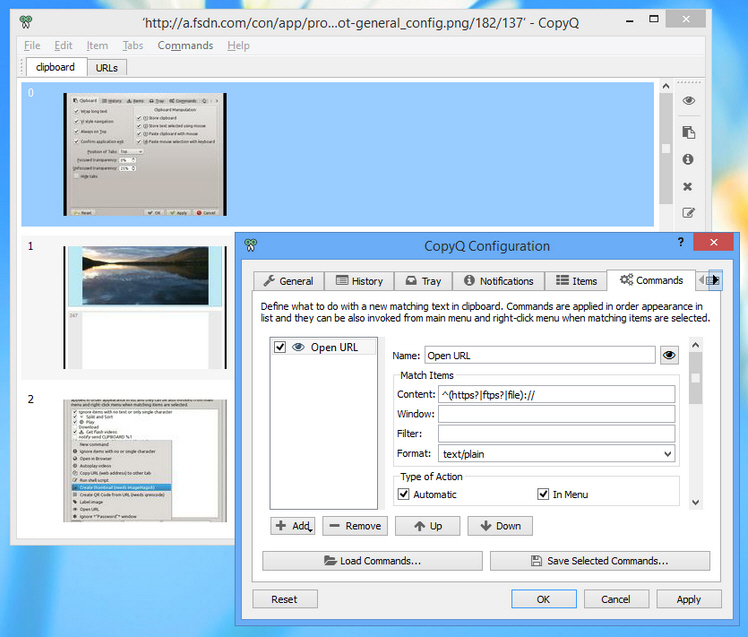

When you enter a shadow copy ID, use the following format, where each X represents a hexadecimal character:

To get the shadow copy ID, use the vssadmin list shadows command. d: Remove all the characters from the current cursor position to the end of the line. Specifies which volume's shadow copy will be deleted.ĭeletes all of the specified volume's shadow copies.ĭeletes the shadow copy specified by ShadowID. You can only delete shadow copies with the client-accessible type.
#COPYQ DELETE ALL WINDOWS#
If applicable, you can also select sharing options, including This org unit, All descendants, or All descendants of type.Applies to: Windows Server 2022, Windows Server 2019, Windows 10, Windows 8.1, Windows Server 2016, Windows Server 2012 R2, Windows Server 2012, Windows Server 2008 R2, Windows Server 2008ĭeletes a specified volume's shadow copies. Select the org units where you want to share the rubric.In the Properties tab, in the Advanced Availability area, click Add Org Units.Click on the rubric you want to share with another org unit.On the My Home page, on the navbar, click Rubrics.If you are using Competencies to evaluate users, we recommend you set up rubrics before you set up your competencies, learning objectives, and activities since you cannot create an activity without associating it with a rubric and you cannot assess whether a user has completed a competency or learning objective without assessing the associated activities using the rubric. Rubrics created at the course level cannot be shared with other courses, however, you can create a rubric in a course template and reuse it in course offerings for that course template. You must explicitly share them if you want to make them available to child org units. Rubrics are not automatically shared with all child org units below the org unit where they were created. You can create rubrics at the organization, department, or course level. To delete a single criterion from a rubric On the Rubrics page, from the context menu of the rubric you want to delete, click Delete.You cannot delete a rubric that is being used by a Competencies activity or Brightspace ePortfolio item, or attached to a grade item. Delete ALL the files and folders in source/left before scanning for changes: This option should be used with extreme care It will delete all files and folders. Now, whenever you want to access CopyQ's main window, simply press the keyboard combination. Enter a key combination you want to use for this action and click Apply.
#COPYQ DELETE ALL PLUS#
You can only delete a rubric in the org unit where it was created. On the CopyQ Configuration window, click on Shortcuts and tap the plus icon ( +) next to Show/hide main window. It is automatically highlighted so you can rename the new criterion.

Note: The new criterion is added under the original with the criterion name Copy of. To cut a selection to the clipboard, choose Edit > Cut. On the Edit Rubrics page, click the action menu beside the criterion name. Choose Edit > Clear, or press Backspace (Win) or Delete (Mac).

It is also possible to copy a single rubric criterion to facilitate reusing criteria that have already been created. Version management objects are also copied. On the Rubrics page, from the context menu of the rubric you want to copy, click Copy. All statistics and reports without an erase symbol are copied.The new rubric has the same properties, levels and criteria, and is shared with the same org units as the original rubric. Copying rubricsĬopying a rubric creates a new rubric based on an existing rubric in the same org unit, allowing you to easily reuse it in a course. Multiple messages that make up a conversation would have to be deleted one a time. You can copy or delete an individual rubric criterion or the entire rubric and share rubrics with other courses.


 0 kommentar(er)
0 kommentar(er)
